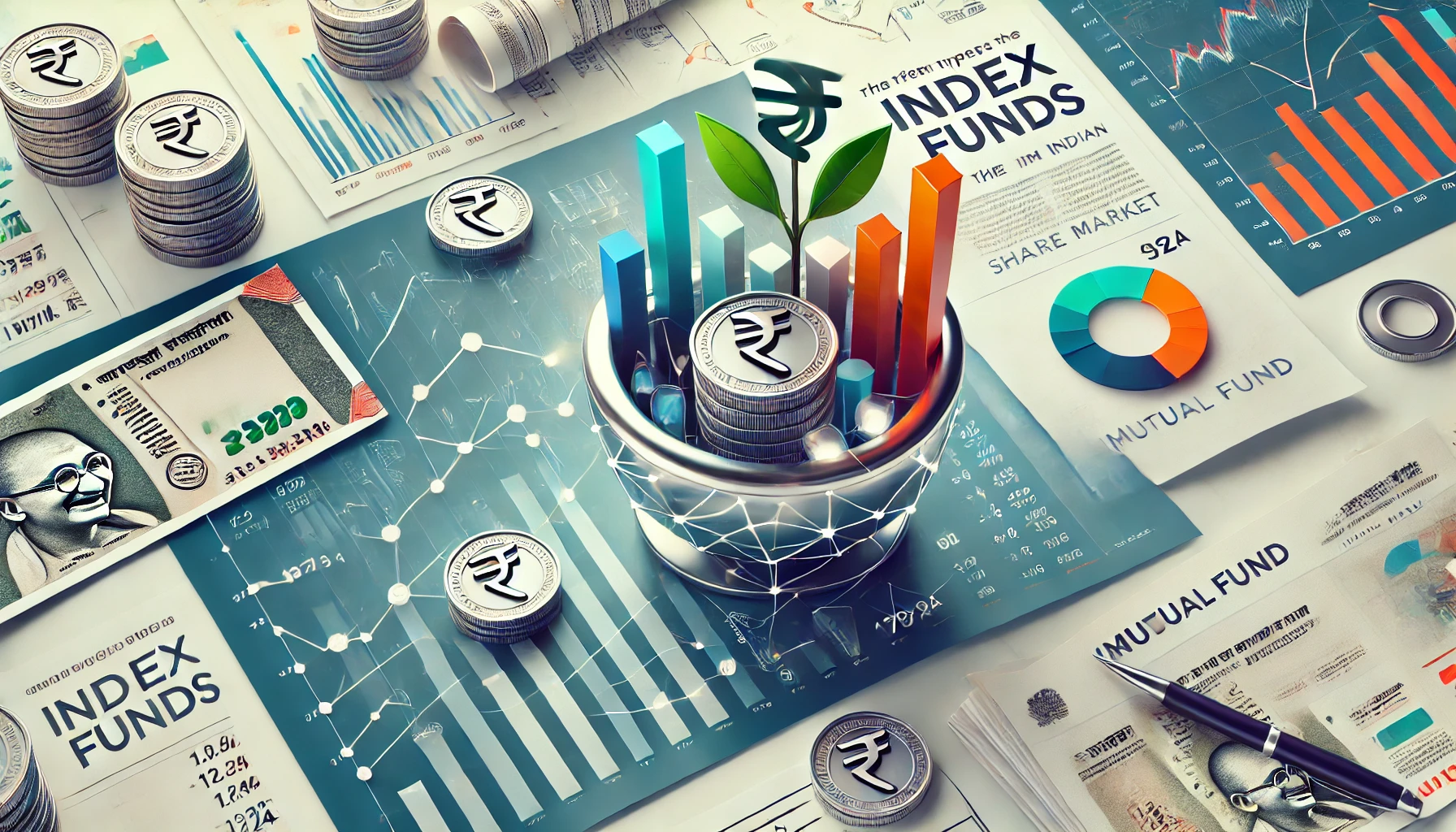In the world of investments, especially in Indian share market mutual funds, the concept of counterparty risk plays a critical role in managing portfolios. Counterparty risk arises when one party in a transaction defaults, impacting the financial stability of the other party involved. This risk can be particularly significant in derivative-based mutual funds or those dealing with debt instruments. Understanding counterparty risk is essential for investors to mitigate potential losses and maintain a balanced, secure portfolio. In this blog, we will explore what counterparty risk entails, how it affects mutual funds, and strategies to manage it effectively.
1. What is Counterparty Risk?
Counterparty risk refers to the probability that the other party in a financial transaction will default on its obligations. In the context of Indian share market mutual funds, this risk is crucial in transactions involving derivatives, repurchase agreements, and debt securities. When one party in a transaction—such as a bank, financial institution, or another investor—fails to meet its contractual obligations, it leaves the other party exposed to financial losses.
Key types of counterparty risk include:
- Credit risk: When a counterparty is unable to pay or fulfill obligations.
- Liquidity risk: When the counterparty has difficulty liquidating assets to meet the contract’s demands.
- Market risk: When the financial markets affect the counterparty’s ability to honor commitments.
Mutual funds in India, particularly those that deal in bonds or derivatives, are exposed to counterparty risk. For example, if a fund manager enters into a derivative contract, the counterparty’s default can lead to significant losses.
2. How Counterparty Risk Affects Mutual Funds in India
Mutual funds, whether equity, debt, or hybrid, often engage with a variety of counterparties for executing transactions. These include brokers, clearinghouses, and other financial institutions. The risk of default by these entities can disrupt the financial performance of the fund.
Impact on Debt Mutual Funds:
Debt mutual funds in India, which invest in corporate bonds, government securities, and commercial papers, are particularly vulnerable to counterparty risk. If the issuer of the debt instruments defaults, the mutual fund may not recover the full principal or interest, leading to a decrease in NAV (Net Asset Value).
Impact on Derivatives-Based Mutual Funds:
Derivatives-based mutual funds are also exposed to counterparty risk. In derivatives markets, contracts such as futures and options are agreements between two parties. If one party defaults, the other may face significant financial consequences. For example, a mutual fund betting on market movements through options could suffer losses if the counterparty fails to deliver the agreed-upon payments.
Examples of Counterparty Risk in India:
- The IL&FS Crisis (2018): Many mutual funds had exposure to debt instruments issued by IL&FS (Infrastructure Leasing & Financial Services). When the company defaulted on its payments, mutual funds holding these instruments saw a sharp decline in their NAVs.
- Yes Bank Crisis (2020): Debt mutual funds with exposure to Yes Bank faced substantial losses when the bank was placed under a moratorium by the Reserve Bank of India (RBI), highlighting the importance of counterparty risk.
3. Historical Data on Counterparty Risk in Indian Mutual Funds
Historically, counterparty risk has had significant impacts on the Indian financial market, especially on mutual funds. The following table provides an overview of notable defaults and their effects on mutual funds in the past decade:
| Year | Company | Event | Impact on Mutual Funds |
|---|---|---|---|
| 2018 | IL&FS | Default on debt payments | Several debt mutual funds lost value due to their exposure to IL&FS bonds |
| 2020 | Yes Bank | Bank moratorium imposed by RBI | Mutual funds with Yes Bank’s bonds faced reduced liquidity and lower NAVs |
| 2019 | DHFL | Default on interest and principal payments | DHFL’s default caused substantial losses in mutual funds with exposure to its debt instruments |
| 2016 | Amtek Auto | Default on its commercial paper | Debt mutual funds holding Amtek Auto’s papers experienced a sharp drop in NAV |
From the table, it is clear that counterparty defaults have led to notable disruptions in Indian mutual funds. Debt mutual funds have been more affected than equity funds because they are directly tied to the financial health of their debt issuers.
In the IL&FS case, the company’s default led to a sharp downgrade in credit ratings, which resulted in a significant decline in the value of mutual funds holding these instruments. Similarly, the crisis at Yes Bank, where several debt funds had exposure, created liquidity issues and led to a freeze on redemptions for a time.
4. How Counterparty Risk Can Be Mitigated in Mutual Funds
Investors can take several steps to mitigate counterparty risk in Indian share market mutual funds. Understanding how fund managers deal with counterparty exposure is crucial in minimizing potential losses.
a. Diversification
Diversification is one of the key strategies to minimize counterparty risk. By spreading investments across multiple issuers and asset classes, investors can reduce their reliance on any single counterparty. This strategy helps to ensure that if one counterparty defaults, the entire portfolio isn’t severely impacted.
b. Credit Ratings
Credit ratings are a valuable tool for assessing counterparty risk. Agencies like CRISIL, ICRA, and CARE provide ratings for companies based on their financial stability. Debt funds often rely on high-rated instruments (AAA or AA), reducing the likelihood of defaults. However, investors should be cautious as ratings can be downgraded quickly, as seen in the IL&FS crisis.
c. Clearing houses
Clearinghouses can also help manage counterparty risk, especially in derivatives markets. A clearinghouse acts as an intermediary, ensuring that both parties in a transaction meet their obligations. In India, clearing corporations such as NSE Clearing Limited reduce counterparty risk for trades executed on the stock exchange.
d. Exposure Limits
Mutual fund schemes often set internal limits on exposure to individual issuers or sectors to prevent excessive reliance on a single counterparty. SEBI (Securities and Exchange Board of India) mandates limits on the exposure mutual funds can have to different instruments, ensuring risk is controlled.
e. Counterparty Due Diligence
Fund managers typically perform thorough due diligence on counterparties before engaging in transactions. This includes evaluating the counterparty’s financial health, reputation, and past default records. Strong due diligence can help mitigate the risk of defaults.
5. Real-World Examples of Counterparty Risk in Indian Mutual Funds
Counterparty risk is not a theoretical concept but a reality in the Indian mutual fund industry. Several cases illustrate the extent to which counterparty defaults can impact mutual fund investments.
IL&FS Default (2018)
IL&FS, once a top-rated infrastructure financier, defaulted on debt payments in 2018. Many mutual funds had invested in IL&FS bonds due to its high credit rating. However, as the company began defaulting on its obligations, mutual funds holding its debt instruments faced significant losses, leading to investor panic and a sharp fall in NAVs.
Yes Bank Moratorium (2020)
In March 2020, the RBI placed Yes Bank under a moratorium due to its financial instability. Several debt mutual funds had exposure to Yes Bank’s debt instruments. The moratorium severely restricted the liquidity of these funds, preventing investors from withdrawing their money. This led to a sharp decline in the NAVs of these funds, sparking concerns about counterparty risk in the banking sector.
DHFL Crisis (2019)
Another prominent example is the default of DHFL (Dewan Housing Finance Limited). Once a leading housing finance company, DHFL defaulted on payments in 2019, impacting several debt mutual funds. The company’s default caused massive disruptions, with some funds losing over 30% of their value in a matter of days.
Jet Airways Crisis (2019)
Jet Airways, once India’s leading airline, defaulted on its loans and lease payments in 2019. Some mutual funds had invested in debt issued by Jet Airways, leading to losses when the airline defaulted. Although the exposure was limited, it highlighted the counterparty risks involved in investing in corporate bonds.
6. Regulatory Framework Addressing Counterparty Risk (400 Words)
In India, SEBI has established several regulations to protect investors from counterparty risk in mutual funds. These regulations are designed to ensure that fund managers maintain proper risk management practices and minimize exposure to high-risk counterparties.
SEBI’s Exposure Limits
SEBI has set strict exposure limits on mutual funds, limiting how much they can invest in a single issuer or sector. These limits are aimed at reducing concentration risk and ensuring that funds do not rely too heavily on one counterparty.
Credit Risk Funds
Credit risk funds are a type of mutual fund that invests in lower-rated debt instruments, offering higher returns but with greater exposure to counterparty risk. SEBI has implemented regulations to ensure that these funds disclose the level of risk to investors and maintain adequate liquidity to handle defaults.
Monitoring and Disclosure Requirements
SEBI requires mutual funds to regularly disclose their exposure to counterparties, along with the credit ratings of their investments. This transparency allows investors to make informed decisions about the level of counterparty risk they are exposed to.
7. Conclusion: Managing Counterparty Risk in Mutual Fund Investments
Counterparty risk is an inherent aspect of investing in Indian share market mutual funds, particularly those involving debt and derivatives. While regulatory frameworks and fund managers play a significant role in mitigating this risk, investors should also take proactive steps to safeguard their investments. By diversifying portfolios, monitoring credit ratings, and understanding exposure limits, investors can minimize the impact of counterparty risk on their financial goals. Awareness and due diligence are essential for maintaining a healthy, risk-adjusted portfolio in today’s evolving financial landscape.

What are Dividend Yield Mutual Funds?
Dividend yield mutual funds are designed for investors seeking a steady income source from their …

What Is Children’s Mutual Fund?
Children’s mutual funds are specially designed to help parents and guardians build a secure financial …

What are Alpha and Beta in Mutual Funds?
In mutual fund investing, understanding performance metrics like Alpha and Beta is essential for assessing …

Sovereign Gold Bonds vs Mutual Funds
For Indian investors seeking diverse investment opportunities, both Sovereign Gold Bonds (SGB) and mutual funds …

What Is Risk-Return Trade-Off in Mutual Funds?
In mutual fund investments, the risk-return trade-off is a fundamental concept that helps investors balance …

What is a Mutual Fund Manager?
A mutual fund manager plays a crucial role in the success of a mutual fund, …

Debt vs Equity Funds
Investing in mutual funds offers various avenues, with debt and equity funds standing out as …

What are the Different Types of Index Funds?
Index funds have gained popularity among Indian investors for offering a low-cost, diversified approach to …

What is CAMS KRA?
CAMS KRA (Computer Age Management Services KYC Registration Agency) is a crucial player in India’s …

What is Yield to Maturity?
Yield to Maturity (YTM) is a crucial concept in fixed-income investments, especially in mutual funds …

What are Thematic Funds?
In the Indian share market, Thematic Funds have gained popularity as specialized mutual funds tailored …

What is Broad Market Index Fund?
In the Indian share market, Broad Market Index Funds offer a straightforward, cost-effective way for …

What are Retail Fund?
In the Indian financial market, Retail Funds are a key category of mutual funds designed …

What is Regional Fund?
In the evolving landscape of the Indian financial market, Regional Funds have emerged as a …

Can Mutual Funds Change Expense Ratio?
Investing in mutual funds involves paying various fees, one of the most important being the …

What is the Inverted Yield Curve?
In financial markets, the yield curve is a key indicator that investors and economists use …

What are Dynamic Asset Allocation Funds?
Dynamic asset allocation funds, also known as balanced advantage funds, are becoming increasingly popular in …

What are Short Term Capital Gains on Mutual Funds?
Investing in mutual funds has become an increasingly popular way for investors to diversify their …

What are Corporate Bond Funds?
Corporate bond funds are a type of debt mutual fund that invests primarily in high-rated …

What Are Money Market Funds?
Money Market Funds (MMFs) are a type of mutual fund that invests in short-term debt …

What is a Fund of Funds?
A Fund of Funds (FoF) is a mutual fund that invests in other mutual funds …

What is a Credit Risk Fund?
A credit risk fund is a type of debt mutual fund that primarily invests in …

What are Gold Funds?
Gold funds are a type of mutual fund that invests in gold-related assets, including gold …

What is Counterparty Risk?
In the world of investments, especially in Indian share market mutual funds, the concept of …

What is a sinking fund?
In the world of finance and investments, planning ahead for future liabilities is crucial for …

What is IDCW in a Mutual Fund?
Investing in mutual funds offers several options for investors looking to grow their wealth over …

What are growth funds?
Growth funds are a type of mutual fund that primarily focuses on capital appreciation by …

CAGR vs Absolute Returns
When investing in mutual funds, understanding your returns is essential to make informed decisions. Two …

What is a Capital Protection Fund?
A Capital Protection Fund (CPF) is a type of hybrid mutual fund designed to safeguard …

What Is Rupee Cost Averaging in Sip?
Rupee Cost Averaging (RCA) is a systematic investment strategy used in mutual fund investments, particularly …

What are Gilt Funds
Investing in mutual funds can be an excellent way to grow your wealth while managing …

What is Target Maturity Funds?
Target Maturity Funds (TMFs) have gained attention in the Indian share market, offering a unique …

What is KIM?
When investing in Indian mutual funds, investors often come across a document known as the …

Trailing Returns vs Rolling Returns
When analyzing mutual fund performance, understanding returns is crucial for making informed investment decisions. Two …

What is Hybrid Mutual Fund?
When investing in mutual funds, you typically aim to find the right balance between risk …

What is XIRR?
Investing in mutual funds is a popular choice for many investors in India, thanks to …

What is the Sharpe ratio?
In the world of mutual fund investing, one of the most crucial aspects to consider …

What is AMFI?
The Indian mutual funds industry has grown exponentially over the past two decades. This growth …

What is Rolling Returns?
Investing in mutual funds requires understanding various performance metrics to make informed decisions. One such …



















